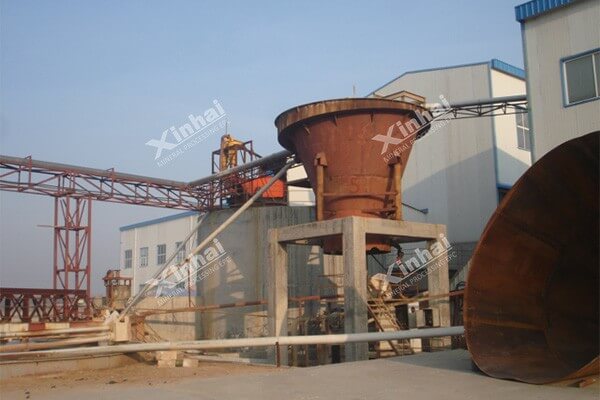

Relevant Problems of Quartz Extraction Technology
2019-06-21 13:52:47xinhai
Quartz sand (silica sand) is one of the important industrial raw materials, widely used in glass, casting, ceramics and other industries. Quartz sand is a chemically stable silicate mineral with a major mineral composition of silica.
Quartz sand (silica sand) is mainly derived from quartzite and vein quartz, which is accompanied by feldspar, mica and clay minerals, while vein quartz is accompanied by feldspar, mica, cuttings, heavy minerals, clay minerals and so on. Although the structure formed by quartzite and vein quartz is different, the composition is similar, so the selection of the mineral processing technology is similar. In the quartz sand extraction process, because there are fewer impurities in the raw ore, the main beneficiation process is to purify and remove a small amount of impurities in quartz sand. Currently, the processes used include: classification and desliming, scrubbing, magnetic separation, flotation, acid leaching and so on.
The quartz ore has good wear-resisting. Ordinary grinding quartz sand process may not achieve a good grinding effect, as well as the grinding process consumes a lot of energy. Thus, we can improve the grinding efficiency and grinding fineness by add grinding aid dosage during the grinding process. The available grinding aids are sodium chloride, ammonium chloride, sodium oleate, triethanolamine, etc., where in the grinding effect of adding ammonium chloride is relatively good.
It is necessary to pay attention to the amount of grinding aid dosage when using it. In a certain range, the more grinding aids you add, the finer grinding fineness you get. Once beyond this range, the increase of grinding aid dosage will cause the grinding fineness to decrease. Therefore, it is necessary to determine the amount of grinding aid dosage by testing before use.
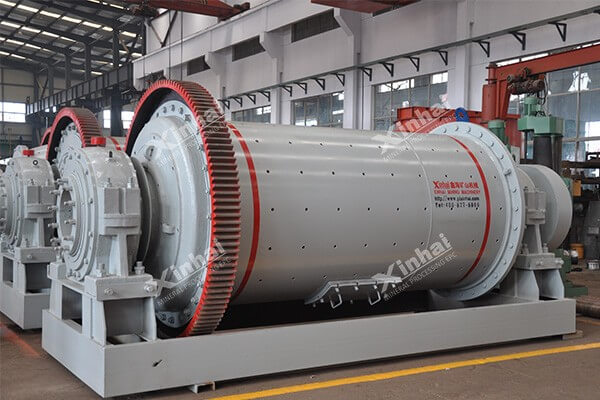
In quartz process, the fine-grain grade with particle size below 0.1 mm is usually called slime. Since the quartz containing more clay and mineral mud, with the particle size of quartz ores decreasing, the grade of silica would also be reduced while the grade of iron and aluminum would rise. Using spiral classifier to classify and deslime quartz ores is easy to operate and also can effectively reduce the impurity content. This simple method can achieve good results, but it cannot remove the thin film iron and sticky material on the surface of quartz sand.
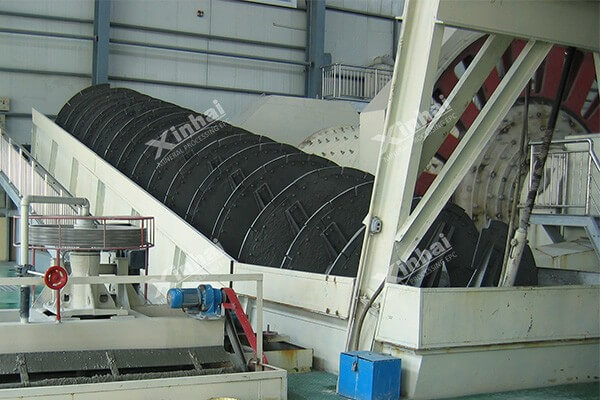
Scrubbing refers to a process that using mechanical equipment create friction between the ore particles. The purpose of this process is to film iron, bond, and clay minerals. Scrubbing is used to remove these impurities of thin film iron and blocking impurities on the surface of quartz. Rod rubbing is an effective way to remove these impurities. The scrubbing concentration can be controlled between 50% and 60%, and the scrubbing time can be determined according to the properties, which can further reduce the impurity in quartz.
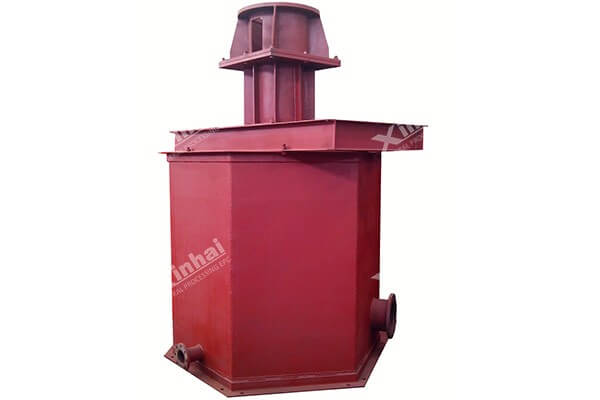
Quartz sand xenoclasts contain hematite, limonite, biotite and other weak magnetic separation minerals as well as secondary cast iron in the crushing process. Usually, strong magnetic separation equipment is used to remove these impurities. If there is magnetite impurity in quartz sand, it can be removed by weak magnetic separation equipment.
Some conclusions obtained from previous studies include:
The higher the number of magnetic separations, the lower the iron content of quartz sand;
The higher the magnetic field intensity is, the more iron impurities can be removed, but the iron removal rate will not increase when the magnetic field intensity is increased to a certain level;
The finer the granularity of quartz sand, the better the effect of iron removal;
In addition, the effect of iron removal is also related to the particle size of quartz sand. The smaller the particle size of quartz sand is, the better the effect of iron removal is.
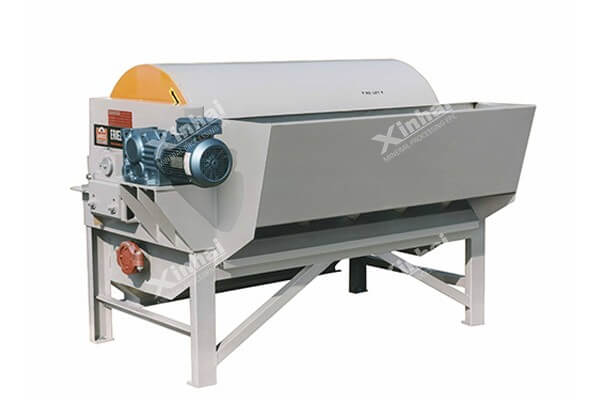
The purpose of quartz flotation process is to remove the non-magnetic associated impurities, such as feldspar, mica. These impurities are similar to quartz in element composition and structure, which is difficult to separate from the quartz. The quartz flotation process can be divided into fluorine flotation process and fluorine-free flotation process. Fluorine flotation process means to separate the quartz with cation collector and hydrofluoric acid activator. Due to the serious impact of fluorine on the environment, the fluorine-free flotation process was developed. The fluorine-free flotation process uses the sulfuric acid or hydrochloric acid to regulate the pH value of the pulp, and adopts the anion cation collector to separate quartz and mica. In addition, using anion - cation collector flotation process in alkaline condition can also get better flotation effect.
After scrubbing, desliming, magnetic separation and flotation process, the quartz sand can basically meet the high purity that industry demands.
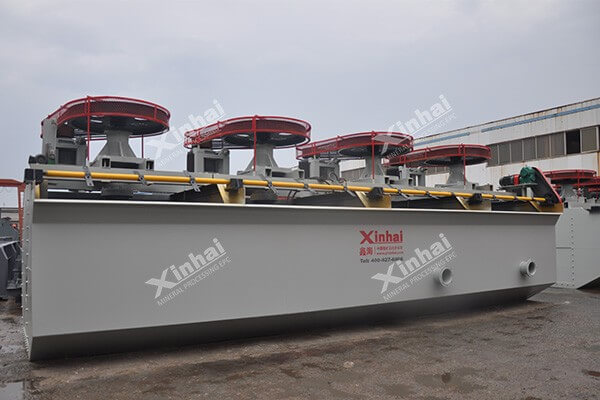
Quartz sands have stable characteristic, for they don’t dissolve in acid expect HF. So there is acid leaching method using acid to dissolve impurities in quartz. The common acid includes sulfuric acid, muriatic acid, nitric acid, and so on. Different kinds and concentrations of acid are selected for different metal impurities in quartz sand. Usually diluted acid are used to remove iron and aluminum, and concentrated sulfuric acid, aqua regia, and hydrofluoric acid are used to remove titanium and chrome.
Since the resolution aqua regia, the concentration of commonly under 10%. Acid leaching was highly influenced by acid concentration, acid dosage, time, temperature, and other factors. It needs to maintain rather low cost by controlling all the factors through quartz grade.
Common quartz sand (silica sand) extraction technology flow includes scrubbing – classifying – desliming, scrubbing – desliming – magnetic separation, scrubbing – desliming – magnetic separation – flotation, scrubbing – desliming – magnetic separation – flotation – acid leaching and so on.
Scrubbing – classifying – desliming technology is suitable for quartz minerals with clay minerals, argillaceous iron, and thin film iron.
Scrubbing – desliming – magnetic separation is suitable for quartz minerals with limonite, tourmaline, hematite, biotite and other magnetic impurities.
Scrubbing – desliming – magnetic separation – flotation is suitable for quartz minerals with impurities before and feldspar.
Scrubbing – desliming – magnetic separation – flotation – acid leaching is suitable for quartz minerals still with little impurities after scrubbing, magnetic separation and flotation. High grade quartz sand(silica sand) can be get from this processing flow.
